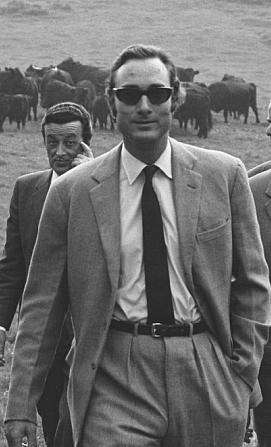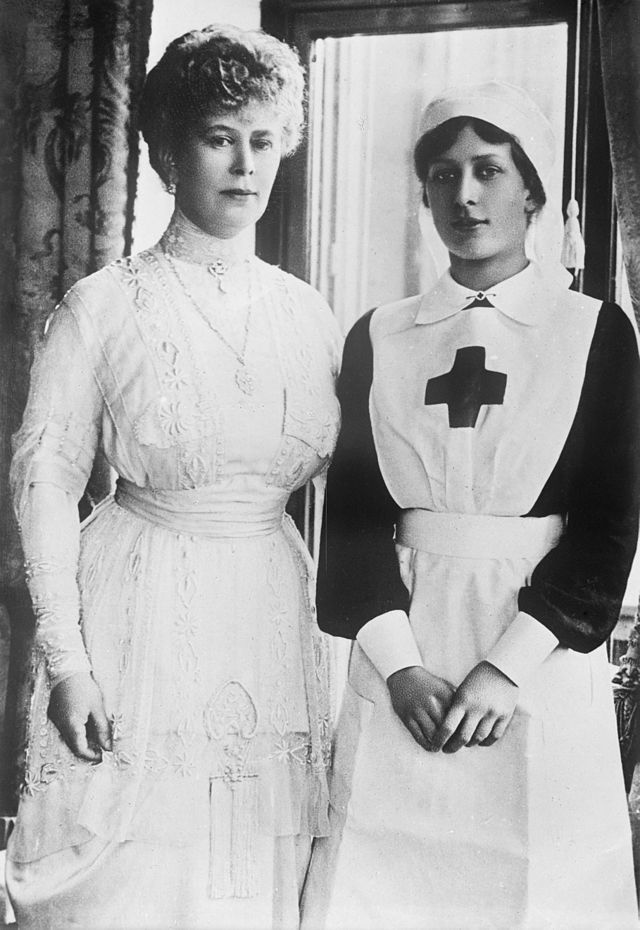by Susan Flantzer
- “One loss follows another till one is dazed” ~ Lord Rosebery, former British Prime Minister
- Timeline: January 1, 1915 – January 31, 1915
- A Note About German Titles
- January 1915 – Royals Who Died In Action
“One loss follows another till one is dazed” ~ Lord Rosebery, former British Prime Minister

Robert Cornwallis Maude, 6th Viscount Hawarden; Photo Credit – http://www.chch.ox.ac.uk
A career in the British Army was not an unusual thing for British peers and their sons, and when World War I started, peers and their sons were well represented among the officers and also well represented in the deaths. It has been estimated that up to one third of the families of British peers lost at least one member. By the end of 1915, the British death toll included nine peers and 95 sons of peers, and it would get worse. By the end of the war, 20% of the peers and their sons who served in World War I had died. Although death did not discriminate between the aristocrat and the commoner, it did favor the young. Nine percent of the British male population under the age of 45 died in World War I.
Both an aristocrat and young, the first peer to die in World War I was only 23. Robert Cornwallis Maude, 6th Viscount Hawarden was born on September 6, 1890, the only child of Robert Maude, 5th Viscount Hawarden and Caroline Ogle, the daughter of a British Army Colonel. Young Robert succeeded to his father’s title at the age of 18. He was educated at St. Michael’s School in Westgate-on-Sea, Kent, England. Robert graduated from Christ Church, Oxford University with a Bachelor of Arts. While at university, he was a member of the University Contingent of the Officers’ Training Corps.
In August 1914, Robert was mobilized and joined the 3rd Battalion of the Coldstream Guards with the rank of Lieutenant. On August 26, 1914, Robert was killed in action at the Battle of Mons in Belgium. He was buried at the Landrecies Communal Cemetery in Landrecies, Nord-Pas-de-Calais, France.
Grave of Robert Cornwallis Maude, 6th Viscount Hawarden
*********************************************************
Timeline: January 1, 1915 – January 31, 1915
- January 2 – April 12 – Russian offensive in the Carpathians begins
- January 18–19 – Battle of Jassin in Jassin, German East Africa (now Burundi, Rwanda, and the mainland part of Tanzania)
- January 19 – First Zeppelin raid on Great Britain
- January 19 – December 22 – Battle of Hartmannswillerkopf in Alsace, France, a series of battles fought to control the peak
- January 24 – Battle of Dogger Bank, naval battle fought in the North Sea off the coast of eastern England between squadrons of the British Grand Fleet and the German Hochseeflotte
- January 24–26 – Chilembwe Uprising led by John Chilembwe in Nyasaland (now Malawi)
- January 28 – February 3 – Ottomans fail to capture the Suez Canal
- January 31 – Battle of Bolimov near Bolimów, Poland; first German use of chemical weapons
*********************************************************
Most of the royals who died in action during World War I were German. The German Empire consisted of 27 constituent states, most of them ruled by royal families. Scroll down to German Empire here to see what constituent states made up the German Empire. The constituent states retained their own governments, but had limited sovereignty. Some had their own armies, but the military forces of the smaller ones were put under Prussian control. In wartime, armies of all the constituent states would be controlled by the Prussian Army and the combined forces were known as the Imperial German Army. German titles may be used in Royals Who Died In Action below. Refer to Unofficial Royalty: Glossary of German Noble and Royal Titles.
24 British peers were also killed in World War I and they will be included in the list of those who died in action. In addition, more than 100 sons of peers also lost their lives, and those that can be verified will also be included.
*********************************************************
January 1915 – Royals Who Died In Action
The list is in chronological order and does contain some who would be considered noble instead of royal. The links in the last bullet for each person is that person’s genealogical information from Leo’s Genealogics Website or to The Peerage website. If a person has a Wikipedia page, their name will be linked to that page.
Captain The Honorable John Beresford Campbell
- 1st Battalion, Coldstream Guards
- eldest son of Hallyburton George Campbell, 3rd Baron Stratheden of Cupar and Campbell of St. Andrews and Louisa Mary Hope
- born June 20, 1866 at Prince’s Terrace, Prince’s Gate in London, England
- married 1895 The Honorable Alice Susan Hamilton, had issue
- killed in action at Cuinchy, Pas-de-Calais, France on January 25, 1915, age 48
- his eldest son Donald Campbell died in action on July 19, 1916, age 20
- http://www.thepeerage.com/p19873.htm#i198728





















